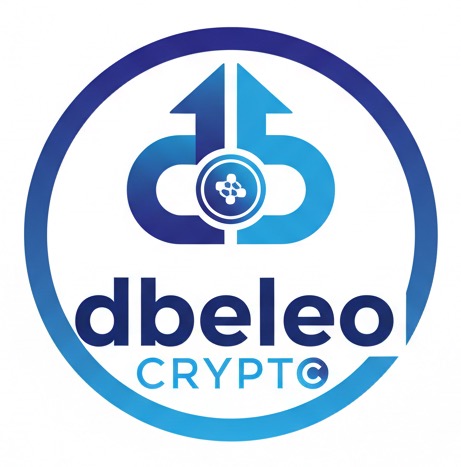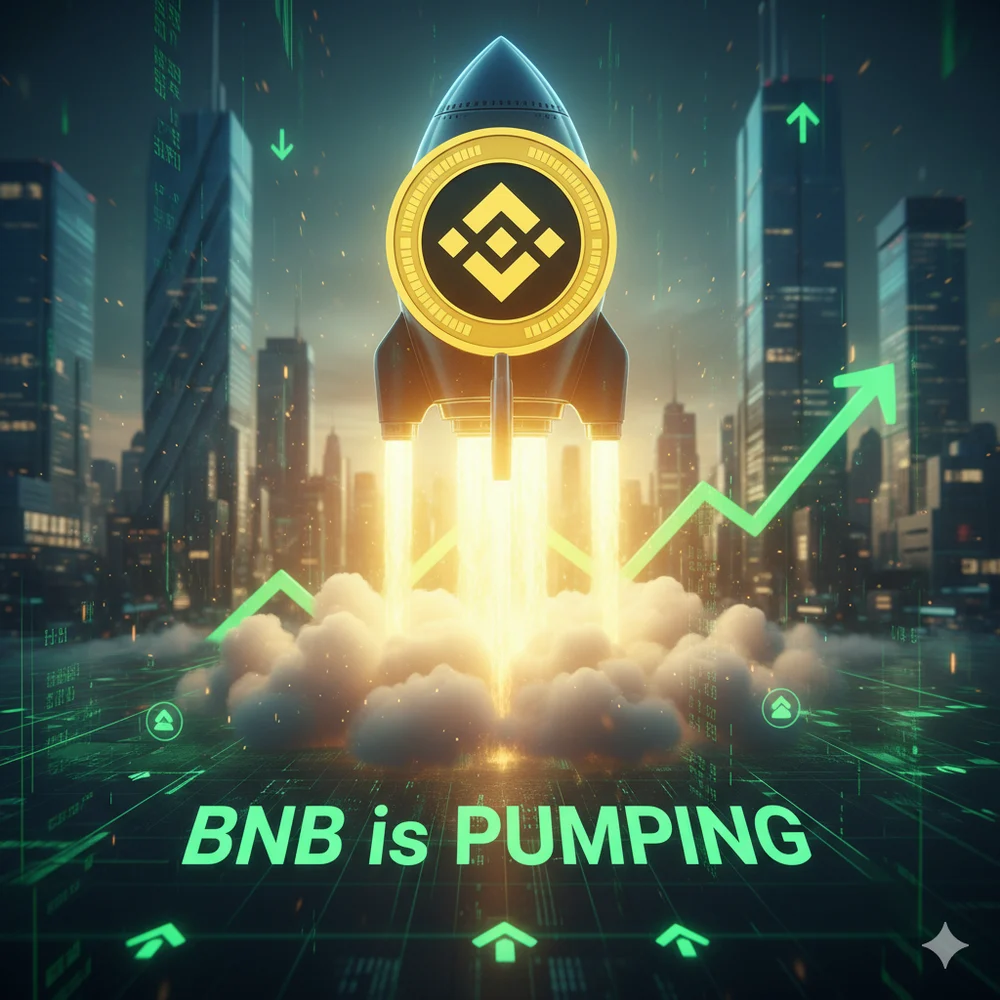I. Decoding the BNB All-Time High Momentum
The recent, decisive price action of Binance Coin (BNB) has drawn intense scrutiny from the global cryptocurrency market. The token recently achieved a new all-time high (ATH) of $1,111.90 1, underscoring a significant structural shift in its valuation and market positioning. This surge was characterized by exceptional momentum, recording weekly gains that topped 17.5% 1 and weekly gains reaching 19.376%.2 This performance not only outpaced many major competitors but also resulted in BNB displacing the Tether stablecoin to capture the third-largest position by cryptocurrency market capitalization.2
The analysis confirms that the recent BNB surge is fundamentally robust, driven not by fleeting speculative exuberance, but by a powerful, multi-factor engine built upon structural stability, relentless utility, and aggressive ecosystem scaling. The core drivers synthesized from the current market movement point to three critical vectors:
- Fundamental Deflation and Utility: A transparent, externally validated mechanism of quarterly token burns, directly tied to the revenue generated by Binance, the world’s largest Centralized Exchange (CEX), drives perennial supply contraction.3
- Ecosystem Validation: Explosive, verifiable on-chain metrics, including a crucial 58% Quarter-over-Quarter revenue increase in Q1 2025 and a record spike to 73.24 million active addresses.1
- Technical Strength: The chart structure confirms a healthy, long-term trend supported by rising 50-day and 200-day moving averages across all major timeframes, indicating enduring market confidence.2
The prevailing market conclusion is that the BNB surge is earned, reflecting a maturation of the asset. BNB has moved beyond reliance purely on speculative market movements to achieve a structural stability that positions it as a high-beta alternative to the established Bitcoin (BTC) and Ethereum (ETH) investment basket.
Also read: Play-to-Earn in 2025: Is it still worth playing for money?
II. The BNB Deflationary Engine and Utility Demand
The intrinsic value of BNB is inextricably linked to the operational success and dominance of the Binance ecosystem, creating a positive feedback loop that ensures constant demand and systematic scarcity.
The Unbreakable Link: Binance Coin Utility and Fee Mechanics
BNB possesses built-in, non-negotiable demand within the Binance ecosystem, making it a critical transactional asset for millions of daily users.3 Its primary function is providing trading fee discounts, a compelling incentive that encourages active traders to continuously hold and utilize the token to minimize transactional costs.3
Beyond transaction fees, BNB serves as the gateway to the most desirable investment mechanisms within the CEX framework. The necessity of holding and potentially staking BNB is mandatory for participation in coveted Initial Exchange Offerings (IEOs) hosted via Binance Launchpad and Launchpool.2 This mechanism acts as a persistent speculative and holding demand sink, ensuring capital is locked away and removing tokens from circulating supply, a factor unique to the exchange token asset class. So long as Binance maintains its position as the dominant global trading venue, the structural demand for BNB remains constant and necessary.
Perpetual Scarcity: Analyzing the Quarterly Burn Mechanism
The cornerstone of BNB’s valuation model is its commitment to aggressive, verifiable deflation. Binance maintains a clear promise to reduce the total supply of BNB down to 100 million coins through a structured, quarterly buyback and burn program.3 This mechanism is not discretionary; it is mandated and funded by a portion of the CEX’s quarterly profits.3 This transparent and predictable reduction in supply, combined with the steady functional demand created by utility, generates continuous, long-term upward price pressure.
This deflationary structure creates a powerful positive economic force known as the Deflationary Flywheel Effect. The mechanism operates as follows: when the broader crypto market experiences rallies—such as the one recently observed, which pushed the total cryptocurrency market capitalization up 1.6% to $4.2 trillion 1—Binance’s trading volumes and fees increase dramatically. This increased activity leads directly to higher CEX revenue, evidenced by the $70 million generated in Q1 2025, reflecting a significant 58% Quarter-over-Quarter growth.3 This higher revenue immediately translates into a larger mandated token burn, accelerating the deflationary mechanism and contributing directly to the current price surge. Analysts have explicitly cited regular token burns, alongside whale and treasury stacking, as key drivers contributing to BNB’s price gains.1 This structural dependence on CEX revenue ensures that the asset is insulated by an internally funded stabilization force.
III. BNB Chain Ecosystem Growth: On-Chain Metrics and Revenue Generation
The recent price action is fully substantiated by hard quantitative evidence indicating profound health and real-world adoption within the BNB Chain ecosystem.
Vital Signs: Analysis of Active Addresses and Total Value Locked (TVL)
User adoption on the BNB Chain has reached unprecedented levels. The network recently experienced a record spike in active addresses, soaring to 73.24 million last month.1 This figure confirms massive real-world application, demonstrating widespread utility far beyond concentrated activity among DeFi whales. Furthermore, the network’s reach is widening, with unique addresses growing by approximately 18% year-over-year, now approaching nearly 500 million total wallets.3
The flow of capital into the decentralized applications built on BNB Chain mirrors this user adoption. The DeFi Total Value Locked (TVL) on the chain has surged, currently tapping $8.23 billion.1 This dramatic increase is supported by quantitative liquidity flows, marked by a 58% increase in TVL year-over-year.3 These metrics validate that substantial capital is actively being deployed within the ecosystem, providing fundamental support to the token’s valuation.
Financial Performance and Transaction Scaling
The financial success of the chain provides the definitive backbone for investor confidence and the long-term viability of the deflationary mechanism. In Q1 2025, BNB Chain generated approximately $70 million in revenue, reflecting a crucial 58% Quarter-over-Quarter growth.3 This exceptional financial performance justifies the tokenomics. High usage metrics accompany this financial success, with daily transactions climbing to nearly 5 million 3, underscoring the critical necessity for maintaining high network capacity and efficiency. Transaction volumes have been consistently high, recording the second-largest monthly amount in September, reaching 4.34 million total.1
Infrastructure Excellence: Hard Forks, Upgrades, and Future Roadmaps
BNB Chain continues to prioritize its competitive edge in transaction cost and speed. The network maintains ultra-low median gas fees, hovering around $0.0085.3 Validators and builders have further committed to this advantage by adopting a new minimum gas price of 0.05 gwei, a measure stated by the BNB team to result in “faster and cheaper trading for users”.1 This strategy is essential for maintaining high competitiveness against rival Layer-1 chains and emerging Layer-2 solutions.
Recent operational stability has been ensured by successfully executed infrastructure enhancements. The Lorentz Hard Fork, which went live in April, reduced block times and introduced enhanced validator networking. Following this, the Maxwell Upgrade, implemented in June 2025, focused on creating faster blocks, improving validator coordination, and smoothing overall network performance.1 These upgrades ensure the chain remains suitable for latency-sensitive applications.
Crucially, the chain’s aggressive future roadmap for scaling is a direct and necessary response to the extreme user adoption validated by the 73.24 million active addresses.1 The roadmap outlines plans to increase the block gas limit from 100 million to an unprecedented 1 billion in 2025 to meet rapidly escalating user demand.1 Looking ahead to 2026, there is an intent to develop a blockchain architecture capable of processing 20,000 transactions per second (TPS) with confirmation times under 150 milliseconds, alongside plans for native privacy features and upgradable virtual machines.1 This proactive investment confirms the ecosystem’s intent to sustain its competitive advantage (low cost and high speed), thereby securing the foundation for future BNB utility and demand.
Finally, the ecosystem has made significant strides in mitigating historical risks. Losses from hacks and exploits dropped by a substantial 67% in 2024 compared to the previous year.3 This critical security improvement is vital for improving institutional confidence, which is necessary for sustained, large-scale financial growth.
Also read: Top 10 Crypto Price Predictions & Market Analysis for 2025-2026 📈
BNB Chain Q1 2025 Ecosystem Metrics and Performance Highlights
| Metric Category | Q1 2025 Performance / Status | Growth Trajectory |
| Monthly Active Addresses | Spiked to 73.24 Million | Highest Recorded Level |
| Unique Addresses | Nearly 500 Million Wallets | 18% Year-over-Year Growth |
| Daily Transactions | Climbed to nearly 5 Million | Consistent High Volume |
| DeFi Total Value Locked (TVL) | Reached $8.23 Billion | 58% Year-over-Year Increase |
| Q1 2025 Revenue | Generated approximately $70 Million | 58% Quarter-over-Quarter Increase |
IV. Technical Analysis of BNB’s Recent Price Action
The technical structure of BNB’s market performance confirms the strength derived from its fundamental drivers, providing assurance that the rally is not based solely on fleeting market noise.
Chart Dynamics and Key Momentum Indicators
The rapid velocity of BNB’s ascent culminated in the confirmed all-time high of $1,111.90.1 This movement indicates strong bullish commitment in the market, further supported by reports of whale and treasury stacking.1 However, the immediate short-term market sentiment appears cautious post-ATH. Technical indicators signal a mixed sentiment, with the Fear & Greed Index registering as Neutral (47).2 Real-time analysis suggests a slight bearish skew, with a 55% Bearish reading compared to 45% Bullish.2 This paradoxical data suggests that while the structural buying (treasuries, whales) drives the overall trajectory, retail investors may be cautious or engaged in short-term profit-taking following the swift price rise. Price volatility over the last 30 days was 6.25%, with 16 out of 30 days showing green candles (53%).2
Moving Average Crossover and Long-Term Structural Support
The technical structure of BNB confirms robust, sustained momentum across multiple timeframes. The analysis of moving averages (MAs) provides a critical technical assessment of the long-term trend, indicating a pervasive bullish outlook.
On the four-hour chart, the 50-day moving average is rising, signaling a strong short-term bullish trend. The 200-day moving average has also been rising since September 30, 2025, confirming a robust longer-term trend. This pattern is replicated on the daily chart: the 50-day MA is currently below the price and rising, potentially supporting future price movements, and the 200-day MA has been rising since September 5, 2025, demonstrating long-term strength. The most critical observation is on the weekly timeframe, where BNB appears undeniably bullish, with both the rising 50-day MA acting as support and the 200-day MA, rising since March 16, 2025, supporting a sustained, years-long trend.2
The stability confirmed by these rising moving averages is a direct technical manifestation of the BNB Deflationary Flywheel discussed in Section II. The guaranteed, revenue-backed token burns act as a powerful structural “demand cushion.” This mechanism reduces sustained selling pressure during market pullbacks and prevents major breaks in the long-term support levels defined by the MAs. Consequently, the technical structure confirms the underlying fundamental stability, positioning BNB as a distinctly lower volatility option compared to many altcoins that lack this direct, revenue-backed support.
V. Comparative Growth Trend: BNB vs. BTC, ETH, XRP, and SOL
The exceptional performance of BNB, achieving new ATHs amid a broader market rally, necessitates a comparison against its major peers to understand the sources of its differentiated growth.
Correlation and Strategic Divergence: BNB vs. Bitcoin (BTC) and Ethereum (ETH)
BNB’s relationship with the market leaders is defined by both correlation and divergence. Asset manager Standard Chartered noted that BNB historically trades almost exactly in line with an unweighted basket of BTC and ETH since May 2021, accounting for both returns and volatility.1 This correlation ensures that BNB retains macro exposure to overall crypto market uptrends, which are typically set by the market leader, Bitcoin.3
However, BNB has recently achieved independent ATHs and showed aggressive weekly gains (17.5% to 19.376%) 1, allowing it to generate alpha and diverge strategically from the BTC/ETH basket average. The justification for this divergence rests primarily on BNB’s possession of a Guaranteed Internal Catalyst. BTC relies on macro institutional adoption and halving cycles, while ETH relies on the success of complex Layer-2 scaling solutions. In contrast, BNB possesses a scheduled, internal catalyst—the quarterly burn mechanism—that is fueled directly by predictable CEX revenue growth (58% QoQ).3 This mechanism guarantees supply compression, creating an inherent source of upward pressure that BTC and ETH cannot replicate.
Moreover, BNB operates a Hybrid Model Superiority. While Ethereum focuses on DeFi leadership, and Bitcoin dominates as a store of value, BNB benefits from both network scaling (Lorentz/Maxwell upgrades, 20k TPS roadmap) and fixed transactional utility, offering dual vectors for valuation growth and stability.
Outperforming Layer-1 Competitors: BNB vs. Solana (SOL) and XRP
In comparison to other major altcoin protocols, BNB’s performance is driven by its unique blend of security, scale, and financial backing.
BNB vs. Solana (SOL): The Stability and Scale Advantage
Both BNB Chain and Solana compete vigorously on high throughput and low fees. However, the BNB Chain leverages the stability and liquidity of the world’s largest CEX. BNB Chain’s strategy is backed by verifiable Q1 revenue of $70 million 3 and is supported by a massive user base of nearly 500 million unique addresses.3 While Solana relies primarily on decentralized developer activity and organic ecosystem growth, the BNB Chain offers a similar performance profile with significantly greater structural security, evidenced by the 67% drop in exploits in 2024.3 BNB’s growth is fundamentally earned through CEX profit, making it a more resilient competitor against pure L1s that rely heavily on fluctuating DeFi liquidity.
BNB vs. XRP: Utility vs. Litigation Risk
BNB’s value proposition is derived from active, constant daily utility essential for trading and exclusive investment access via Launchpad.3 The token’s price dynamics are tightly coupled with the operational reality of the Binance exchange. Conversely, XRP’s primary drivers remain closely intertwined with its adoption in international payment systems and, crucially, ongoing litigation risk that consistently shadows its valuation. BNB’s decisive ascent into the third-largest cryptocurrency spot 2 confirms that its structural demand model is viewed by the market as superior and more resilient than assets whose primary value proposition is impacted by regulatory and judicial uncertainties.
The structural success of BNB is rooted in its Hybrid Token Thesis. It offers the high-growth potential of a highly scalable Layer-1 competitor (with an aggressive roadmap targeting 20k TPS) combined with the stability and guaranteed transactional volume inherent in the dominant exchange utility token. This combination insulates BNB from the high volatility typically observed in pure L1 tokens that lack guaranteed transactional volume and positions it as a necessary structural benchmark asset. CEX volume is high, steady, and generates revenue used to systematically reduce supply. Therefore, BNB’s performance demonstrates greater resilience and predictability, justifying its recent outperformance against peers that lack this unique, dual structural backing.
VI. BNB Price Prediction and Forward-Looking Outlook (2025-2028)
Integrating expert forecasts and scenario analysis is crucial for contextualizing the current ATH and setting future expectations for BNB’s trajectory.
Short-to-Mid Term Forecasts: Base, Bull, and Bear Case Scenarios
Based on the current ecosystem health, several scenarios have been mapped for the next 12 months. The Base Case defines the $1,000 to $1,400 range as the most likely outcome, a target sustained by the continued effectiveness of the deflationary mechanism, consistent utility, and current adoption rates.3
The Bull Case anticipates the conditions necessary to breach the optimistic $1,500 to $2,000+ range. This scenario requires major market accelerators, including lighter regulatory pressure globally, increased institutional inflows into the entire crypto market, and the successful, demonstrable execution of key infrastructure upgrades, such as the 2025 plan to increase the block gas limit to 1 billion.1
Even in a significant market reversal, the Bear Case for BNB is structurally supported. The downside range is placed between $600 and $900.3 While possible under tightening regulations or a broad market correction, this floor is heavily supported by long-term holders and the expectation that the core CEX utility will continue unabated. This framing suggests that dips toward the bear case range may be viewed by institutional holders as strategic opportunities, given the token’s underlying structural stability.
Long-Term Institutional Targets (Standard Chartered Projections)
Institutional analysts have provided long-term forecasts that validate BNB’s position as a fundamentally robust asset. Standard Chartered projected in May that BNB would reach a peak of $1,275 by the end of 2025.1 This figure acts as an institutional consensus target, based on the assumption that BNB will continue to gain in tandem with expected performance increases in BTC and ETH.
Looking further ahead, Standard Chartered issued a bold long-term vision, projecting BNB to reach $2,775 by the end of 2028.1 This substantial long-term target implicitly validates the enduring stability and strength of the BNB utility model, provided Binance maintains its market dominance and the deflationary tokenomics persist.
The fact that institutional analysts tie BNB’s long-term valuation to the macro BTC/ETH basket confirms a fundamental change in market perception. For large-scale financial entities, BNB is no longer viewed merely as a speculative, high-volatility altcoin. It is established as a structurally sound digital asset whose valuation is linked directly to the overall macro health of the entire digital asset market, differentiated primarily by its ability to generate exchange-backed alpha.
BNB Price Forecasts and Underlying Conditions (2025-2028 Outlook)
| Prediction Scenario | Timeframe | Price Range / Target | Underlying Conditions / Analyst |
| Base Case | Next 12 Months | $1,000 – $1,400 | Strong utility, consistent burns, and steady adoption. |
| Bull Case | Next 12 Months | $1,500 – $2,000+ | High institutional inflows, increased DeFi TVL, lighter regulation. |
| Bear Case | Next 12 Months | $600 – $900 | Market downturn or significant regulatory tightening. |
| Institutional Peak (Standard Chartered) | End of 2025 | $1,275 | Expected gain in tandem with BTC/ETH performance. |
| Long-Term Target (Standard Chartered) | End of 2028 | $2,775 | Continued correlation with BTC/ETH basket and sustained utility. |
VII. Conclusion: Assessing BNB’s Valuation Stability and Future Position
The current BNB price pump, leading to new all-time highs, is the direct and logical outcome of a unique, hybridized valuation model. BNB successfully combines the structural, deflationary economics of the world’s largest CEX with the competitive high-speed utility and aggressive scaling roadmap of a top-tier Layer-1 blockchain.
The quantitative evidence is overwhelming: 58% Quarter-over-Quarter revenue growth, a record 73.24 million active addresses, and a technically confirmed long-term bullish market structure.1 BNB’s performance is inherently more resilient and predictable than pure-play Layer-1 tokens because its demand is constant and revenue-backed, insulating it from the high volatility of speculative altcoins.
By transitioning from a purely CEX-dependent token into a structurally stable, high-utility benchmark, BNB has cemented its position as a “must-watch” asset. The strong long-term rising moving averages suggest sustained holding pressure will continue. Moving forward, market participants should closely monitor the successful implementation of the 2026 infrastructure roadmap, particularly the development of the 20,000 TPS architecture. The execution of this ambitious scaling plan is considered the next major catalyst required for BNB to fully realize the $2,775 long-term institutional targets projected for the end of 2028.
FAQ
The recent price surge, which pushed BNB to a new all-time high of $1,111.90 and resulted in weekly gains of up to 19.376% , is driven by a combination of fundamental and technical factors. Key drivers include sustained treasury and whale stacking , the positive market sentiment from regular token burns reducing supply , and the general momentum from the broader cryptocurrency market rally.
BNB serves as the foundational asset of the Binance ecosystem, ensuring constant transactional demand. Its primary uses include paying commission fees on the exchange, often with discounts, and trading against more than 50 cryptocurrency pairs. Furthermore, holding BNB is mandatory for participating in coveted investment opportunities like Initial Exchange Offerings (IEOs) via Binance Launchpad and Launchpool.
Binance maintains a consistent, quarterly buyback and burn program, which is funded by a portion of the Centralized Exchange’s (CEX) profits. This mechanism is designed to reduce the total supply of BNB to 100 million coins. This predictable, revenue-backed reduction in circulating supply creates persistent upward pressure on the price, making BNB’s valuation structurally sound.
Yes, the growth is quantitatively verifiable. The BNB Chain recently saw a record spike in monthly active addresses, reaching 73.24 million. Unique addresses are approaching 500 million in total, reflecting an approximately 18% year-over-year increase. This mass adoption is mirrored by the financial health of the chain, which generated roughly $70 million in Q1 2025—a 58% Quarter-over-Quarter revenue growth.
Analysts predict a strong trajectory for BNB. The Base Case forecast for the next 12 months places the price range between $1,000 and $1,400, supported by stable utility and consistent burns. The Bull Case could push BNB into the $1,500 to $2,000+ range if institutional inflows and regulatory clarity improve. For a long-term outlook, asset manager Standard Chartered projected BNB could reach $1,275 by the end of 2025 and potentially rise as high as $2,775 by the end of 2028, assuming its correlation with the broader BTC/ETH market basket continues.
While BNB historically trades closely with an unweighted basket of Bitcoin and Ethereum returns and volatility , its recent outperformance is tied to its unique structural advantages. Unlike BTC and ETH, BNB possesses a guaranteed, scheduled internal catalyst—the quarterly burn mechanism—that is directly fueled by consistent CEX revenue. This revenue-backed deflation provides a structural stabilization force and a reliable source of supply contraction that major macro assets lack, allowing BNB to generate independent alpha.
The BNB Chain has an aggressive scaling roadmap to support its growing user base. Key plans include increasing the block gas limit from 100 million to 1 billion in 2025 to meet user demand. Looking ahead to 2026, the team intends to develop a blockchain architecture capable of processing 20,000 transactions per second (TPS) with confirmation times under 150 milliseconds.
Works cited
- BNB Price Surges Past $1,100 Amid Ecosystem Growth and Token … https://cointelegraph.com/news/bnb-all-time-high-market-rally-upgrades-2025
- BNB (BNB) Price Prediction 2025 2026 2027 – 2030 – Changelly, https://changelly.com/blog/binance-coin-bnb-price-prediction/
- BNB Price Prediction, Where Could it Be 12 Months From Now …, , https://www.binance.com/en/square/post/30550382632729






